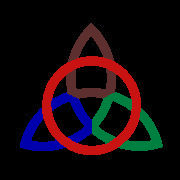
| Geography |


|
Page Bar
|
|
| Pg.1 | |
|
Pg.2
|
|
The island was originally connected to the Mid-Atlantic Ridge millions of years before its inhabitants came to it. It broke away from the Ridge after millions of years of pressure, which caused the high ridge along the west coast of the island. The island itself is situated at latitude 30.51N and at a longitude of 31.10W and is situated in the midst of the Atlantic Ocean, bathed by a warm branch of the Gulf Stream, the island enjoys a temperate nautical climate, without great variations in annual temperature. The Island is incredibly beautiful with presence of luxuriant, exuberant greenery, which includes all the colours of the rainbow and is speckled with bright flowers. Then there are the wonderful lagoons at the bottom of craters. The irregular lands cut by hills and valleys and the flat areas with cultivated fields that look like a chess board. The constant presence of the blue sea which can be seen from the top of a high cliff on Mt Juve or glimpsed on a level with the vineyards of Shaeffera.
The island can be broken up into three main areas:
· The island has a mountainous region also know as Amon Gwareth, in the northwest where it is rich in resources such as wood, marble, ore and many different types of stone. Mt Juve provides many of these resources; it stands at a height of 2344 metres above sea level. It is because of this mountain that the people of the island are able to survive. It provides them with fresh water, and creates what is known as the water cycle. Therefore this mountainous ridge acts as a catchment, allowing fresh rainfall to flow into the various rivers along its side and throughout the island, flowing directly into and creating the Faber delta.· Another of these regions is the southern area of the island known as Sheaffera, where the Faber delta is located. Throughout this area the land is very fertile and because of this the land is used mainly for the growing of crops such as bananas, citrus fruits, sugarcane, peaches, figs, wine, grapes, grain, tomatoes, onions and potatoes. The reason for this fertile land is due to the rivers throughout the island and especially due to the Faber delta. The way the rivers is that with heavy rainfall in the monsoonal season the Verus River floods and the retreats leaving behind this fertile land used for crops. The rest of the land in this area is fenced off and animals, which have been introduced to the island, are breed and used for agriculture. These animals include: pigs, chickens, sheep, horses and also oxen.
· The third section of the island is known as the forest region or Dorthonian. This region is a dense forest, which has many types of flora and fauna. It is placed on the northern part of the island. The Dorthonian region has trees and shrubs such as Lavrels, Holly, Myrtle, Eucalyptus trees, Pine trees and a variety of luxuriant, exuberant greenery and shrubs which includes all the colours of the rainbow and is speckled with bright flowers. This area is very important to the island as it contains most of the islands timber. It also contains most of the wild life and has some of the rarest birds in the world.
One of the main geological features on this island is its intricate river system. Because of the high peaks of Mount Juve and the catchment, which is formed, the rivers provide fresh clean water for the whole island. The rivers flow all over the island and through the four main cities. The water cycle which occurs in these rivers are based on the seasons, in the winter season the rivers flood and then retreat to leave fertile land. Most of the precipitation that occurs on the island happens at the high peaks of Mount Juve, yet there are still high amounts of rainfall among the rest of the island. This cycle occurs most years but Triquatra is also subject to server Atlantic wind, storms and currents. The average winter temperature is 14 degrees Celsius while the average summer temperature is 23 degrees Celsius. The Island itself is subtropical due to the Gulf Stream and has a very calm and slightly humid climate. The rainy season is from November to March.
Climatic Graph for Triquatra in 2000


